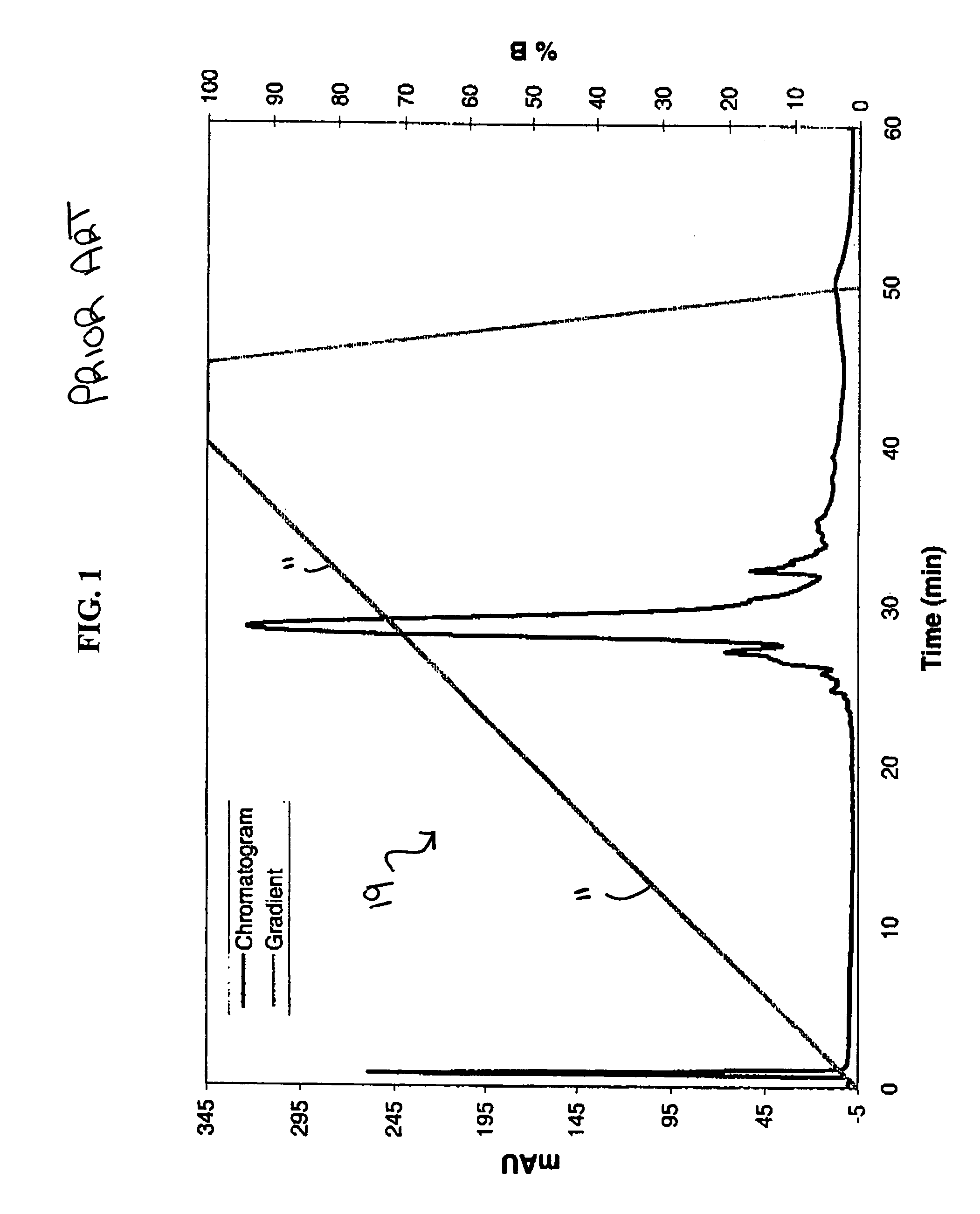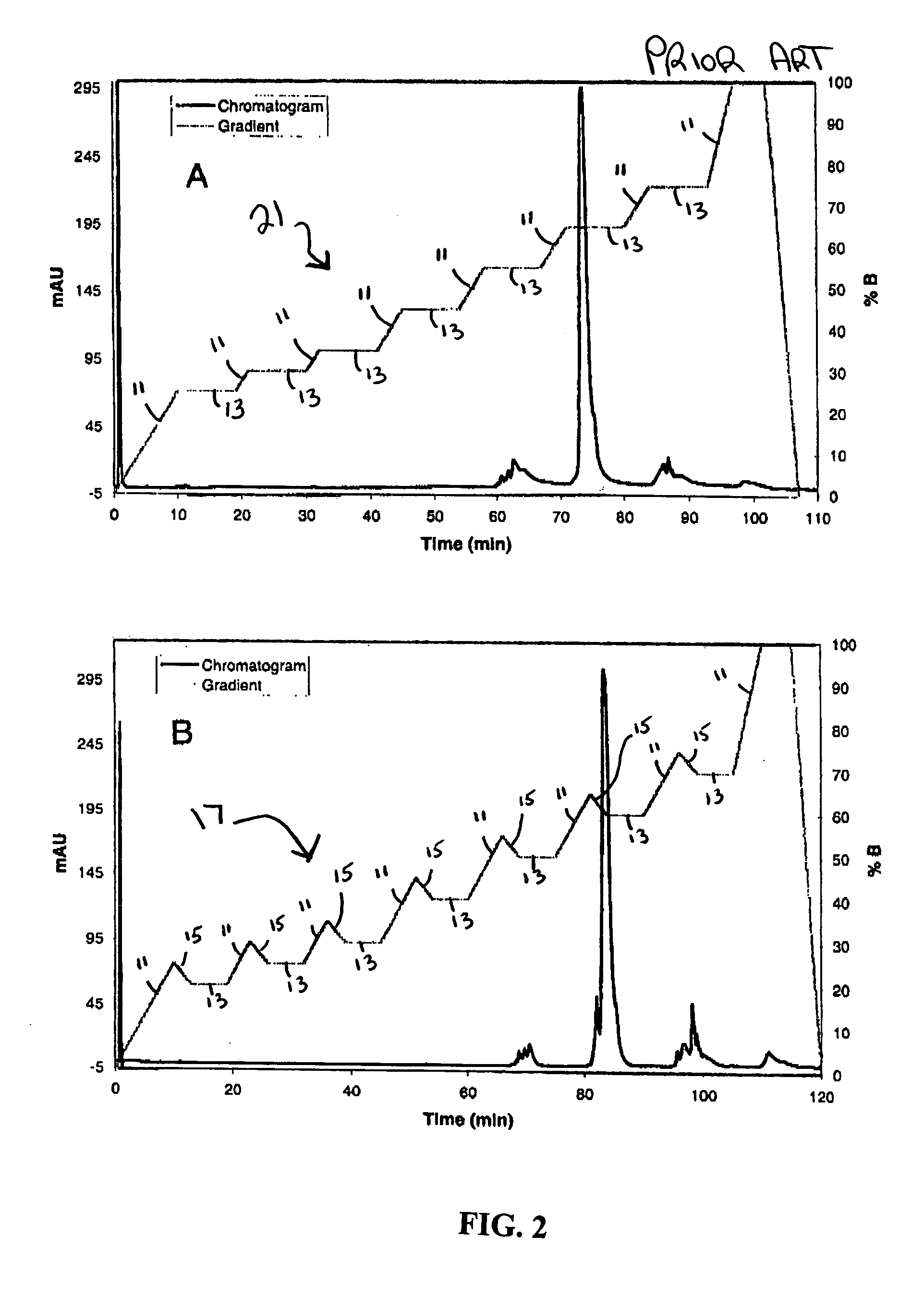Apparatus and method of utilizing a sawed tooth shaped gradient for chromatographic separation
a gradient and chromatographic separation technology, applied in the field of chromatography, can solve the problems of large improvement, complex proteome, and extraordinarily difficult analysis, and achieve the effects of preventing undesirable elution, and reducing the risk of elution
- Summary
- Abstract
- Description
- Claims
- Application Information
AI Technical Summary
Benefits of technology
Problems solved by technology
Method used
Image
Examples
Embodiment Construction
[0025] The present invention provides a gradient profile for separating whole proteins that allows for the injection of small protein “packets” into a downstream microfluidic device for further capillary electrophoresis (“CE”) separation or other processing. The saw-tooth gradient profile of the present invention incorporates a delay in which flow is maintained without eluting more proteins. The novel saw tooth gradient of the present invention provides results comparable to a linear gradient profile with the added benefit that a portion of the sample may be eluted from the column while the remainder of the sample may be maintained on the chromatography column-the ability to elute only a portion at time provides for higher quality and more efficient downstream processing.
[0026] The novel saw-tooth gradient profile is created by providing a mobile phase comprising at least a first component and a second component, increasing the concentration of the first component to allow for the ...
PUM
| Property | Measurement | Unit |
|---|---|---|
| diameter | aaaaa | aaaaa |
| flow rate | aaaaa | aaaaa |
| concentration | aaaaa | aaaaa |
Abstract
Description
Claims
Application Information
 Login to View More
Login to View More - R&D
- Intellectual Property
- Life Sciences
- Materials
- Tech Scout
- Unparalleled Data Quality
- Higher Quality Content
- 60% Fewer Hallucinations
Browse by: Latest US Patents, China's latest patents, Technical Efficacy Thesaurus, Application Domain, Technology Topic, Popular Technical Reports.
© 2025 PatSnap. All rights reserved.Legal|Privacy policy|Modern Slavery Act Transparency Statement|Sitemap|About US| Contact US: help@patsnap.com



